A well-cared-for diesel generator will start when you need it most; that peace of mind is priceless. People who count on these machines for business power, emergency lighting, or remote work know that reliability hinges on smart upkeep. Taking a few scheduled maintenance steps now almost always beats scrambling later to fix a significant failure or replace expensive parts. In the following sections, practical checklists, expert hints, and everyday fixes come together so you can keep your generator humming and dodge the bigger bills. Stick with the advice here; the machine you bought to back you up may outlast your original guess on its lifespan.
What is Diesel Generator Maintenance?
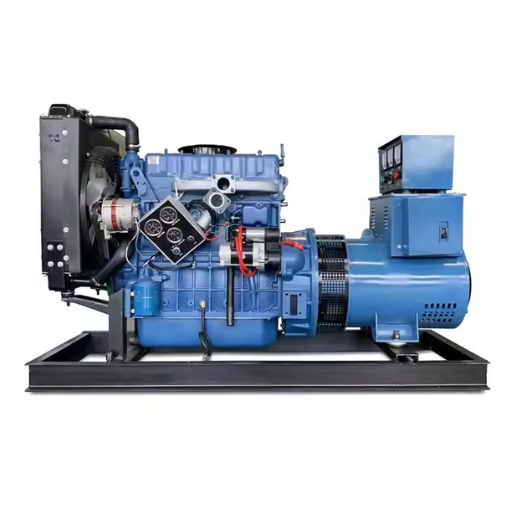
Routine diesel-generator care means turning wrenches more than once a year. Change the oil, swap out fuel and air filters, and top up coolant until it sits at the right mark. Glance at the battery terminals, listen for odd rattles, and peek inside for any loose hoses. Each small look-over stands between you and an outage at the worst possible moment.
Understanding the Importance of Generator Maintenance
Why bother with generator maintenance? Because doing the work up-front avoids nasty surprises later. A well-kept machine is more likely to run, cost less over time, and keep everyone safe when the lights truly go out. Here are five down-to-earth reasons to stick to a maintenance schedule:
- Avoiding Downtime
Nobody picks a blackout; sudden power loss hits when you least expect it. Regular tune-ups ensure the generator pops on without a fight, so you’re never left watching the clock tick in the dark.
- Extending Lifespan
Oil changes, fresh filters, and quick system sweeps cost pennies compared to a brand-new unit. Stay ahead of wear and tear; the machine will stick around years beyond its estimate.
- Fuel Efficiency
Dirty injectors or clogged air filters can turn a once-thrifty engine into a gulping hog. A reliable service chart allows the motor to burn only what it needs.
- Preventing Major Repairs
A worn belt today still costs less than a seized crankshaft tomorrow. Spotting minor quirks early lets you fix them before they snowball into repair bills big enough to gag anyone in accounting.
- Ensuring Safety
Generators spit out carbon monoxide, and a blocked exhaust line can turn a lifesaving tool into a silent killer. Routine checks keep the vents clear and the alarms honest, shielding everyone from harm.
Key Components of Diesel Generator Maintenance
|
Key Component |
Description |
|---|---|
|
Routine Inspection |
Check for leaks, wear, and system integrity. |
|
Lubrication Service |
Monitor and replace engine oil and filters. |
|
Cooling System |
Check coolant levels and clean radiator fins. |
|
Fuel System |
Inspect fuel lines, filters, and tank. |
|
Battery Maintenance |
Test, clean, and charge batteries regularly. |
|
Air System |
Clean or replace air filters as needed. |
|
Exhaust System |
Inspect for leaks and repair immediately. |
|
Engine Exercise |
Run monthly to prevent system degradation. |
|
Tightening Components |
Secure bolts, belts, and electrical connections. |
|
Cleanliness |
Keep the generator exterior and parts clean. |
Benefits of Regular Maintenance
Staying on schedule doesn’t just keep power flowing; it stretches the machine’s life. A well-loved generator burns less fuel, hums quietly, and hardly ever throws codes or faults. Safety improves, service bills shrink, and the whole setup becomes one less thing to worry about when storms or blackouts roll in.
How Often Should You Service a Diesel Generator?
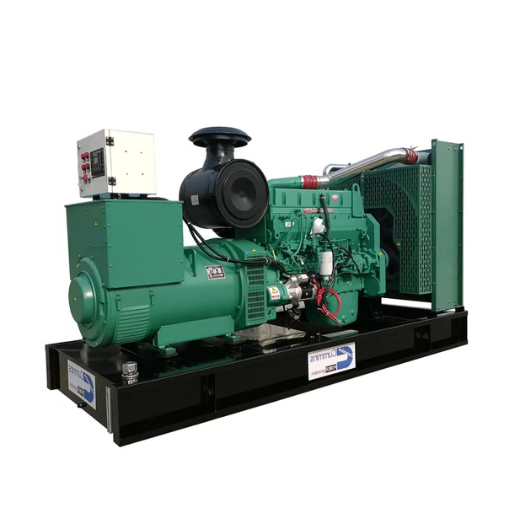
Diesel generators need a solid check-up at least once every six months or after they clock 250 hours, whichever comes first. The typical service list includes oil swaps, a new filter or two, and a quick peek at fuel lines, belts, and bolts so nothing gets missed. Sticking to the maker’s schedule isn’t just a good habit; it keeps the machine humming and cuts the odds of a surprise stall.
Creating a Generator Maintenance Schedule
|
Frequency |
Key Maintenance Tasks |
|---|---|
|
Daily |
Check for leaks, alarms, and pest intrusion. |
|
Weekly |
Inspect fluids, exhaust, and run in auto mode. |
|
Monthly |
Test battery, clean cables, and check coolant. |
|
Semi-Annual |
Perform full diagnostics and inspect systems. |
|
Annual |
Replace filters, oil, and perform load testing. |
Signs It’s Time for Service
Spotting trouble before your backup generator quits can save you a long night in the dark. Regular attention also ensures that the machine runs when you really need it.
- Hard Starts
Every homeowner hates that moment when the starter just clicks and nothing else happens. Batteries, spark plugs, or even fuel line clogs are often the real culprits.
Industry surveys show that a whopping 40 percent of crank-no-start cases are traced back to dead or dirty batteries. Letting the unit sit for months without maintenance lets corrosion take over. A quick monthly check keeps disaster at bay.
- Odd Noises
Generators should hum along, not bang, grind, or rattle like loose change in your pocket. Clunks and knocks hint at engine mounts working loose or bearings giving up.
If you continue using the machine after hearing those sounds, you risk shattering something expensive. When the noise hits, pull the plug and call a technician before the problem spreads.
- Black or White Smoke
Puffing black or milky white smoke clouds are the machine’s way of signaling trouble ahead. Bad fuel mixtures, clogged lines, or cheap oil can all steal clean breath.
Mechanics say dirty air filters create about a quarter of all smoke-related repairs. Swapping that little foam rectangle every few runs takes less time than reading this paragraph. Regular filter checks and routine oil changes let you see the next power outage coming and beat it.
- Decreased Power Output
When your generator only hums instead of roaring, the trouble often hides in old fuel, tired belts, or a cranky alternator. Experts keep spotting clogged filters and corroded carburetors as the usual power thieves.
- Leakages of Fuel, Oil, or Coolant
A sticky red or green puddle beneath the unit usually shouts, Fix me now! Any drip cuts efficiency and invites flames, so most emergency calls trace back to leaks, and no one bothered to seal up.
- Overdue Maintenance Based on Usage
These days, generators wave a digital flag when the oil change is due, yet many owners answer in silence. Skipping that ping can shave years off the machine; regular tune-ups have been shown to stretch life spans by nearly 20 percent.
Keep an eye on these clues and schedule service on time. Doing so ups your chances of a trouble-free outage and saves your wallet from more dramatic repairs later.
Importance of Preventive Maintenance
I lean hard on preventive upkeep because a small wrench today beats a big bill tomorrow. Catching quirks early keeps parts from quitting mid-storm and helps the unit sip fuel instead of guzzling it. That bit of routine fussing hands me calm the next time the lights throw a tantrum.
What Are the Essential Filter Changes for Diesel Generators?
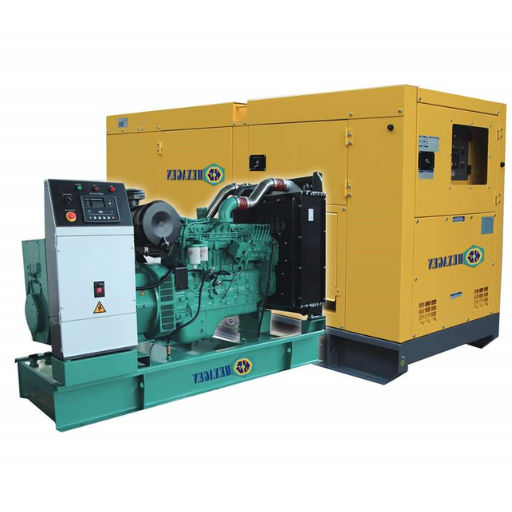
Keeping a diesel generator running smoothly isn’t just about topping off the tank; it’s also about swapping out the right filters on schedule. Missing those small chores can lead to big headaches later on.
- Air Filter
Dust, grit, and tiny bits of junk love to sneak into an engine. The air filter prevents that. Change it whenever it looks dirty or the owner’s manual gives the green light. Doing that keeps the airflow strong and worry-free.
- Fuel Filter
Raw fuel can hide rust, dirt, and other troublemakers. The fuel filter catches all of that before the liquid hits the injectors. Swap the part on the recommended timetable; clogged lines won’t ruin anyone’s day.
- Oil Filter
Engine oil carries heat and grime away from vital parts. The oil filter sifts out those contaminants so the oil can keep doing its job. Most pros change the filter whenever they top off or replace the oil. Good habit, longer engine life.
- Coolant Filter (if fitted)
Some generators use a coolant filter to keep the cooling loop clean. That piece of gear stops sludge and unbalanced additives from building up. Swap it according to the schedule laid out in the coolant-system checklist.
Sticking to the intervals in the generator’s manual means fewer surprises and a longer service life. A few minutes spent on filters today could save hours of cleanup tomorrow.
Types of Filters and Their Functions
|
Filter Type |
Function |
|---|---|
|
Low-Pass Filter |
Allows low frequencies, blocks high frequencies. |
|
High-Pass Filter |
Allows high frequencies, blocks low frequencies. |
|
Band-Pass Filter |
Passes a specific frequency range, blocks others. |
|
Band-Stop Filter |
Blocks a specific frequency range, passes others. |
|
Butterworth Filter |
Maximally flat amplitude response. |
|
Chebyshev Filter |
Steep slope, ripples in passband. |
|
Bessel Filter |
Linear phase, minimizes overshoot. |
|
Notch Filter |
Attenuates a narrow frequency range. |
Steps for Filter Replacement
|
Step |
Action |
|---|---|
|
Locate Filter |
Identify the filter’s location in the system. |
|
Turn Off System |
Power off the unit to ensure safety. |
|
Access Filter |
Open the housing or vent to access the filter. |
|
Remove Old Filter |
Carefully take out the used filter. |
|
Clean Housing |
Wipe or vacuum the filter compartment. |
|
Insert New Filter |
Place the new filter in the correct direction. |
|
Close Housing |
Securely close the housing or vent. |
|
Restore Power |
Turn the system back on and check the operation. |
Effects of Dirty Filters on Generator’s Performance
Neglecting your generator filters is like breathing through a coffee straw; the engine struggles, fuel disappears fast, and mechanical wear adds up silently. Once a screen or element chokes on dust, grass clippings, or bug guts, the normal air gulp or oil flow slows to a trickle. That slowdown forces the unit to push harder than needed, wasting gasoline or diesel and tipping efficiency into the red.
The Department of Energy once estimated that a single clogged filter can shave off nearly 15 percent of a generator’s bite, a hit that adds up to real money over months of operation. Restricted airflow often fans the flames, so to speak, letting internal temperatures spike until sensitive pieces—motors, control boards, even the alternator—start to falter. Nobody likes surprise repairs, especially when the wrenching cost is still fresh in the budget.
Emissions tell a similar story. A gas engine that draws half-hearted air burns fuel unevenly, then coughs out extra carbon monoxide, soot, and assorted nasties that land the operator in a compliance headlock. The fines hurt, but watching the landscape dim under untreated exhaust feels worse. Regular filter checks keep the paperwork neat and the planet a little cleaner.
One of the easiest ways to keep a generator humming is to regularly swap out dirty filters. Most experts say to peek at your filters every 200 to 500 operating hours or stick to whatever number the owner’s manual lists. Clean filters let the engine burn less fuel, run smoother, and spit out fewer fumes, so your job site stays wallet-friendly and planet-friendly.
Why is Professional Technician Involvement Crucial?
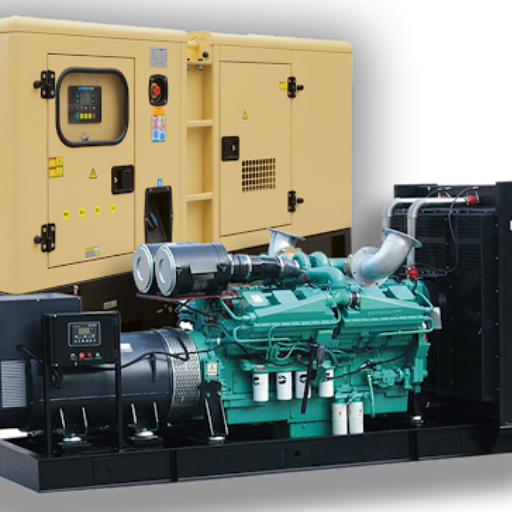
A certified technician can turn a chore into a science project. These pros know how to spot a tiny crack long before it turns into a meltdown, and they follow every maintenance step that the manufacturer wrote down. By catching minor problems early, the expert eye helps your generator last longer, dodge expensive repairs, and stay within safety rules.
When to Call a Technician
When the machine starts coughing, sputtering, or producing odd noises, picking up the phone becomes the smart move. Even routine servicing- matching the schedule in the owner’s manual- deserves a professional’s touch if reliability is the goal.
Advantages of Hiring a Professional Service
Bringing in a seasoned generator technician is a way to swap guesswork for know-how. Those pros carry the right tools and up-to-date training, so they spot problems fast and fix them without any trial-and-error fumbling. Following the manufacturer’s playbook keeps the warranty intact, shielding my wallet from surprise repairs. When a qualified hand is on the machine, I can relax and trust that the generator will roar to life the next time the lights go out.
What are the Best Practices for Commercial Generator Maintenance?
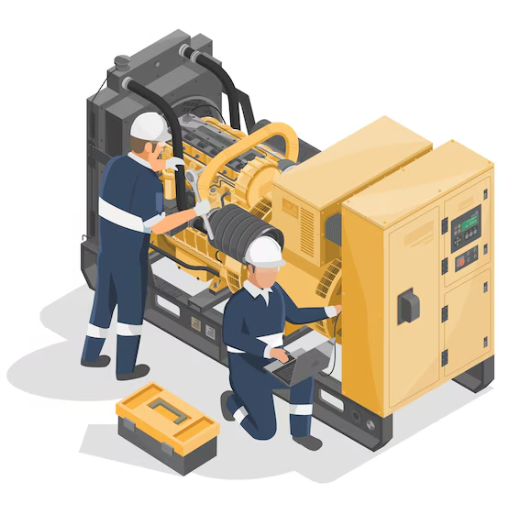
|
Key Practice |
Description |
|---|---|
|
Conduct Regular Inspections |
Check for leaks, wear, and system integrity. |
|
Test Battery Regularly |
Ensure charge and clean terminals. |
|
Replace Filters Periodically |
Change air, oil, and fuel filters as needed. |
|
Check Fluid Levels |
Monitor oil, coolant, and fuel levels. |
|
Perform Load Testing |
Simulate full load to ensure reliability. |
|
Inspect Belts and Hoses |
Look for cracks, wear, or damage. |
|
Clean Cooling System |
Prevent overheating by flushing and cleaning. |
|
Use High-Quality Fuel |
Avoid contamination and ensure optimal performance. |
|
Maintain Transfer Switch |
Test and inspect for proper operation. |
|
Schedule Professional Checks |
Conduct annual inspections by certified technicians. |
Routine Checks for Commercial Generators
Older trade press articles love to call a commercial generator the unsung hero of a job site, and they aren’t entirely wrong. Like most heroes, the machine stays sharp only when someone pays attention. The following five checks cover the basics and help the generator hummer when the world quietens.
Inspect Oil Level and Condition
Take a quick look at the dipstick and make sure the oil sits between the two marks. Crusty old fluid or a level that dips too low is a direct ticket to engine wear, so swap in fresh lube on the schedule carved out by the manufacturer. Clean oil works a lot like coolant for moving parts: it absorbs heat and scrapes away invisible damage before you see it.
- Monitor Battery Health
Check the battery voltage with a multimeter, then rub the posts with a wire brush if you spot any green powder. Tight, corrosion-free connections let the starter spin fast enough to fire the engine even during the coldest hour of the night. A battery left to sulk in neglect is the silent prankster that ruins a midnight power failure drill.
- Check Fuel Lines and Filter
Crawl under the skid, pop the access cover, and scan for wet spots, pinholes, or cracked hose clamps. Sinister diesel or contaminated gasoline goes sour quickly, so draining the bottom of the tank every few months cuts sludge out at the knees. Some operators swear by polishing systems; others stick to good fuel and regular eyeballs. Either way, clean lines mean uninterrupted flow when the business needs it most.
- Examine Air Filters
Shake the filter element over a trash can; if half the debris falls out, consider it your lucky day and give it another go. A clogged filter chokes the engine like a hand over a mouth, and it will overheat or quit when you ask for peak power. Replacement cartridges cost pennies compared to a rental generator screaming toward a midnight deadline.
- Test Your Automatic Transfer Switch (ATS) Regularly
Your automatic transfer switch, or ATS for short, is the unsung hero that boots your backup power to life when the primary grid dies. Run a simulated power-loss test now and then to be sure the switch kicks over without a hitch. A smooth transition cuts downtime close to zero.
Keep up with these quick drills and you dodge expensive repairs, stretch your generator’s shelf life, and have peace of mind when the lights go out for real.*
Long-term Maintenance Tasks
Keeping up with long-term maintenance is the secret sauce that lets a generator run reliably for a decade or more. These jobs are not the quick weekend checks; they dig deeper and usually show up once a year or whenever the factory manual says so.
- Fuel System Inspection and Cleaning
Sediment and tiny bits of rust can drift into the fuel line, mess with flow, and turn a quiet hum into a sputter. Experts recommend draining and scrubbing the tank once a year, swapping out the filters, and eyeballing the hoses for pinholes. If that gunk is left alone, tests show it can steal 15% of the machine’s power.
- Replace Worn-Out Components
Belts, bearings, and seals live close to the action, so they wear like the treads on an old tire. A quick look every 1 to 3 years- and a swap if anything looks rough- keeps those parts from quitting mid-storm. Bad bearings and their pals are blamed for nearly a third of the surprise outages.
- Coolant System Servicing
Coolant doesn’t last forever, so it’s wise to give it a good flush every year or two. If you ignore it, sludge and rust can quietly pile up inside the radiator. A quick pH check lets you see whether the fluid is still doing its job.
- Electrical Connection Testing
Worn insulation risks generator windings, so a resistance test is worth the hassle. Loose terminals or a bit of corrosion can spark trouble and waste power. Most safety pros push for a full electrical inspection once a year.
- Run Load Bank Tests
Putting the generator on a load bank proves it can handle the workload when you need it most. The heavy draw burns out sticky carbon that can choke the engine. Experts usually say to schedule this test once every 12 months.
- Update Firmware or Controls
Today, even generators have software menus, and those menus sometimes get updated. A quick check on the manufacturer’s website might reveal fixes that improve fuel use or smooth out quirks. Keeping the firmware current helps the machine stay smart.
Following a few basic upkeep habits can keep your generator running when needed most, and new industry tips help, too. Every model is different, so double-check the owner’s manual for the right timings and chores.*
Ensuring Reliable Power in Commercial Settings
To ensure reliable power in commercial settings, I prioritize regular maintenance and strictly follow the manufacturer’s guidelines for service intervals. I make it a point to address any software updates or patches promptly, as they often enhance efficiency and address potential issues. Staying informed about the latest industry insights helps me proactively maintain the generator’s performance and longevity. This approach ensures uninterrupted power and peace of mind in critical operations.
References
-
Use of performance-monitoring to improve reliability of emergency diesel generators – A report from MIT discussing design, surveillance, and maintenance improvements for diesel generators.
-
Maintenance practices for emergency diesel generator engines onboard United States Navy Los Angeles class nuclear submarines – A thesis analyzing maintenance records for diesel generators used in submarines, hosted by the Naval Postgraduate School.
-
Maintenance concepts for Emergency Diesel Generator sets in nuclear power plants – A study from North Carolina State University focusing on maintenance philosophies for diesel generators in nuclear power plants.
Frequently Asked Questions (FAQ)
Q: Why is proper maintenance necessary for a diesel generator?
A: Proper maintenance is crucial for a diesel generator to ensure reliable backup power during a power outage, extend the lifespan of your generator, and prevent costly repairs. Regular checks and upkeep help maintain optimal performance and efficiency.
Q: How often should I inspect my diesel generator?
A: Keeping a regular inspection schedule for your diesel generator is important. Inspections should be conducted according to the manufacturer’s recommendations, typically every 6-12 months, or more frequently if the generator is heavily used.
Q: What are the key components to check during maintenance checks?
A: During maintenance checks, inspect the fuel tank for leaks and contamination, examine the exhaust system for any corrosion or buildup, check coolant levels to prevent overheating, and ensure all hoses and terminals are secure and free from wear. Regular oil changes and battery maintenance are also essential.
Q: How do I perform proper diesel generator battery maintenance?
A: To maintain the battery, ensure it is fully charged, clean the terminals to prevent corrosion, and inspect for any signs of degradation. Regular testing of the battery’s voltage can also help ensure its readiness as a backup power source.
Q: What is a load bank test, and why is it necessary?
A: A load bank test involves running the diesel generator under a simulated load to ensure it can handle the power demands during an actual power outage. This test helps identify potential power generation issues and verifies the generator’s operational reliability.
Q: How can I prevent coolant leaks and overheating?
A: Regularly check the coolant level and inspect hoses for leaks or wear. Ensure the coolant system is free from contaminants that can cause corrosion or blockage. Following the manufacturer’s recommendations for coolant replacement is also crucial in preventing overheating.
Q: Why is it important to exercise the generator regularly?
A: Exercising the generator involves running it regularly, even if there is no power outage. This practice helps lubricate moving parts, prevent buildup in the exhaust system, and ensure the diesel engine remains in good working condition. It also allows for early detection of potential issues.
Q: How often should I change the oil in my diesel generator?
A: Oil and filter changes should be performed according to the manufacturer’s recommendations, usually every 100-250 hours of operation or annually, whichever comes first. Regular oil changes help prevent engine wear and maintain the efficiency of power generators.
Q: What should I do to maintain the fuel system of my diesel generator?
A: To maintain the fuel system, use high-quality diesel fuel and add a stabilizer to prevent degradation. Regularly inspect the fuel tank for leaks or contaminants, and clean or replace fuel filters as part of the maintenance process to ensure uninterrupted power systems.
Q: Is professional maintenance necessary for my diesel generator?
A: While regular personal inspections are essential, scheduling regular professional maintenance ensures that all components are thoroughly checked and maintained according to the manufacturer’s recommendations. Experienced technicians can identify and address issues that may not be apparent during routine checks.







